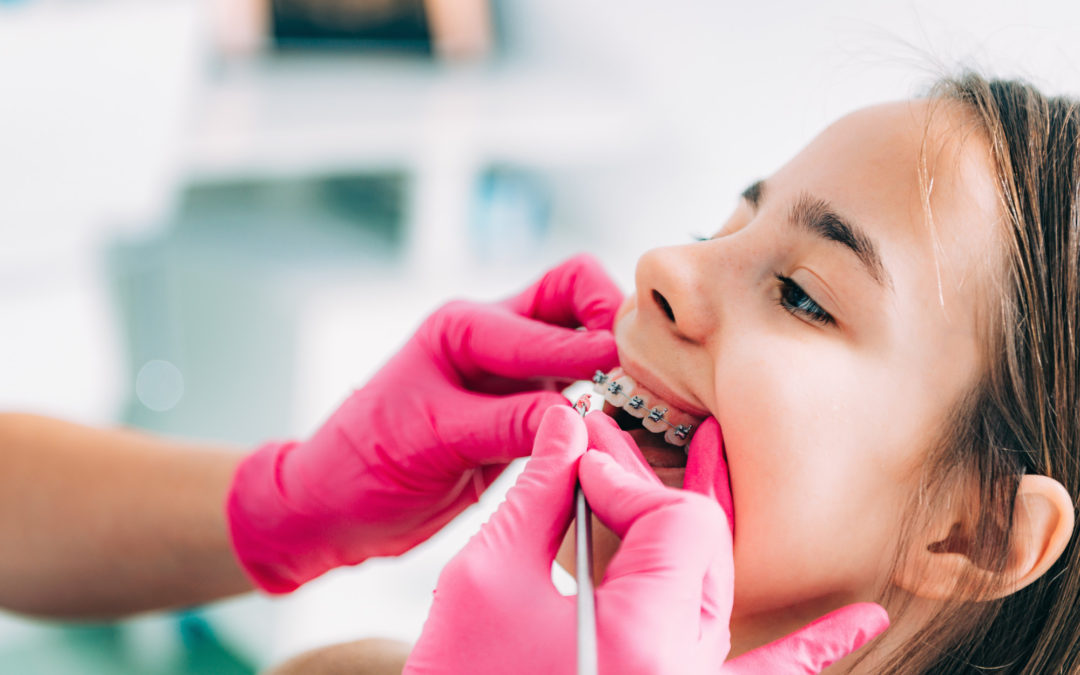Today, over 4 million people in the U.S. have braces. They’re an excellent way to fix crooked teeth and malocclusions.
If your child has a malocclusion, you might wonder what that means exactly. While it might sound like a complicated word, it doesn’t have to be. Read this guide on malocclusion in children, what it is and how it can be treated today!
What Is Malocclusion in Children?
Your Nashville orthodontist will explain that malocclusion is when your child’s teeth are crowded or crooked. It could also be a bite problem (open, over, underbites).
If there’s a problem with their bite, your child’s teeth don’t align properly.
Common bite problems include:
- Crossbite- The top teeth are behind the bottom
- Underbite- The lower jaw sticks out over the upper
- Overbite- The upper jaw sticks out over the lower jaw
- Open bite- The teeth don’t meet when the jaw closes
Bite classes include 1, 2, and 3. Class 1 is the most common. The upper teeth overlap the lower teeth.
Class 2 is an overbite. Class 3 is an underbite.
Malocclusion Symptoms
Your child might have difficulty with chewing or biting; they might also experience discomfort. They might have a lisp when they speak.
Open bites can cause problems biting into foods. Mouth breathing is another symptom.
Malocclusion Causes
Malocclusion could be from the environment, genetics, and develops as your child grows. Your child’s teeth could also be too large for their jaw, causing them to crowd together.
Losing teeth could cause the others to shift and take their place. Babies and toddlers who suck their thumb are more likely to have this condition.
Some believe that teeth grinding might lead to malocclusion as well. Teeth grinding could be due to anger, anxiety, stress, etc.
How Malocclusion Is Diagnosed
Orthodontists in Nashville will take impressions of the teeth and X-rays. Impressions will help them evaluate the severity of the malocclusion. X-rays will look at the teeth, bones, and internal tissues.
Signs of malocclusion include:
- Misplaced teeth
- Oversized teeth
- Crowded teeth
- Shifting jaws
Malocclusion Treatment Options
Invisalign treatment is a common option. Many choose this since it’s discreet and your child doesn’t have to worry about food restrictions.
With traditional braces, they can’t eat anything too sticky, hard, etc. Invisalign will provide the same effect as traditional braces.
Braces work by applying pressure on the teeth to reshape the underlying bone in your tooth socket.
Another treatment might include space maintainers. If baby teeth are lost too early, they’ll leave room for permanent teeth.
In more serious cases, surgery might be required (orthognathic surgery). Your child might need the removal of baby teeth due to mouth crowding.
Why Treat Malocclusion in Children?
It can cause trouble with speaking, breathing, and eating. Some children could have jaw joint problems or gum disease if left untreated. Malocclusion could also lead to decayed teeth or damage to tooth enamel.
Malocclusion could also lead to temporomandibular joint disorder (TMJ). Symptoms of TMJ include pain in one or both of the temporomandibular joints. Children might also experience tenderness or pain in the jaw.
How long treatment will take will depend on:
- Follow the instructions of your orthodontist
- Health of the bone, gums, and teeth
- Room in the mouth
- The distance teeth have to be moved
- How severe the problem is
Next Steps
Be mindful of all follow-up appointments for your child and write them down. Find out how you can contact their orthodontist’s office if you have questions.
Understand why a certain treatment is recommended and the desired results. Think about different questions in advance that you’d like answered. Write down symptoms your child is experiencing such as biting issues, speech, etc.
Why Invisalign?
Clear plastic aligners apply gentle pressure to move teeth and help jaw alignment. Your child will receive their first set of aligners and receive new sets as their teeth adjust. The orthodontist will check your child’s teeth along the way to ensure they’re moving properly.
Your child will achieve fast results without others noticing that they’re wearing braces. Invisalign comes with customized treatment plans based on years of research.
Comfort
Many children say how comfortable Invisalign is. They don’t have to worry about wires poking inside their mouth or having their braces tightened.
Works Fast
It tends to work faster than traditional braces. Invisalign is a clean and smooth aligner for the mouth that won’t poke or hurt.
Easier Maintenance
Your child will be able to brush and floss as usual since they’ll take the aligners out. Traditional braces make it harder to get under the wires and clean them. Your child won’t be limited to foods that they can and can’t eat since Invisalign is removable.
Play Sports Easier
Your child could damage a bracket or experience a tooth injury with metal braces during sports. If your child needs to wear a mouthguard, Invisalign is removable. After treatment, your child will wear a retainer at night.
Better Understanding Malocclusion in Children
After exploring this guide, you should better understand malocclusion in children, what causes it, and how to treat it. There are various treatment options for your child.
If you’re ready to help your child obtain not just a straight smile but an easier time eating and better speech, we can help! Contact us today, and we’ll come up with a customized plan that works for your child’s needs. Our specialty is helping children and teens obtain the smile of their dreams!



